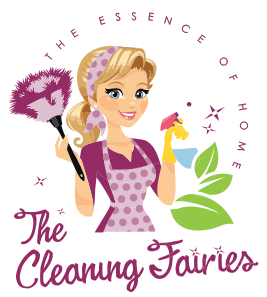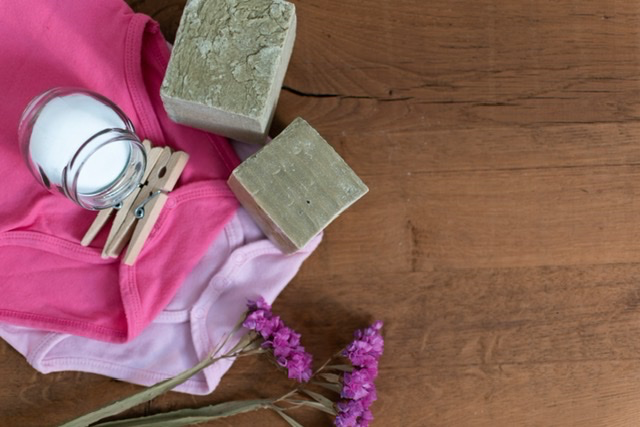DIY Laundry Detergent Recipes just for you!
Laundry… that endless pile of washing that accumulates in your laundry basket, day after day, week after week.
Laundry can be a chore. It can be something that you dread dealing with, even as you know you’re wearing your last pair of clean sweatpants… leaving you with no choice, but to chance a look at the overflowing laundry basket, the battle you have been putting off for weeks, the fear you are ultimately forced to confront.
And once you’ve sorted through your clothes, there’s the problem of the laundry detergent. Conventional laundry detergents are typically full of all kinds of dangerous and toxic chemicals. They can react unfavorably to your skin, expose your clothes to a plethora of harsh conditions, and even cause environmental pollution.
If you’ve got sensitive skin, and you feel all itchy and uncomfortable every time you wear freshly washed clothes, this could be because of those tiresome laundry detergents full of substances that could trigger an allergic reaction. This can be blamed on the heavy dyes, fake fragrances, and chemicals in most conventional laundry detergents that sit in colorful packets in aisles at your local supermarket.
The wrong laundry detergent can cause all sorts of problems. Sometimes, laundry detergents leave behind pesky white stains, which are especially visible on black clothing—not great when you’re trying to look badass, but everyone can tell you’ve been using the wrong sort of laundry detergent! Laundry detergents are also typically extremely alkaline substances, and this can damage the fabric of your clothes. A cheaper quality of detergent can also cause the color to run off your clothes—leaving you with a tired, faded version of what was once your favourite bright pink sweater.
Possibly one of the biggest downsides to conventional laundry detergent, though, is the fragrance. Of course, it SMELLS good enough—like freshly plucked roses, or plain old chlorine bleach, or whatever the advertisements claim. But at what cost?
The dangerous synthetic scents often used in conventional laundry detergents are extremely hazardous and toxic. They can leave you with a series of health problems, from more major ones to relatively common ones, like headaches. And no wonder, really, because studies have shown that most of the synthetic chemicals used in fake fragrances are actually derived from crude oil (which is generally really bad for you, and for the environment). The chemicals thus derived include carcinogenic benzene derivatives, aldehydes, toluene, and many other toxic chemicals that could lead to any amount of diseases and disorders such as cancer, birth defects, allergic reactions, disorders of the central nervous system, and hormone disruptions.
Chemical surfactants, stabilizers, and brighteners are also potentially harmful ingredients, found in many conventional laundry detergents.
You may well ask if laundry detergent really is so full of dangerous synthetic chemicals, what is one to do in order to keep their clothes stain-free, and smelling fresh?
Read on to find out how to make your own laundry detergent, from scratch, using natural ingredients with as few harmful chemicals as possible!
Laundry Detergents for General Use
Commuting to and from your workplace, biking through the streets, going on hikes, walking your pet--- all of this means your clothes are going to have absorbed a lot of dust, dirt, and sweat. How best to wash all of this off and get your clothes looking good as new every time you wear them while ensuring minimal wear and tear to your clothes?
Here’s a simple and easy recipe for a laundry detergent you can make in your home, without having to use up a lot of money, and while being able to save yourself from a whole lot of toxic and potentially allergenic substances you would otherwise encounter in store-bought laundry detergent.
Ingredients:
Sodium Carbonate: This is also known as soda ash, or, more commonly, washing soda. In addition to the many other properties that make it excellent for use in laundry detergent, it is also useful as a water softener, and for raising the pH of the detergent.
Sodium bicarbonate: Otherwise known as baking soda, you can find this easily enough on the shelves of any supermarket near you! This works effectively as a fabric softener. It also helps in removing stains and odors.
Bar soap: Make sure to use toxin-free bar soap. Ideally, they should be unscented, and free of too many synthetic chemicals. Bar soaps usually contain fatty acids that can act as emollients and surfactants.
Essential oils: You don’t just want clean laundry, you also want it to smell fresh, but without the unpleasant side effects that come with fake fragrances… which is why essential oils are your best bet! Imagine coming back to a load of fresh laundry that smells like a field of lavender, or has the citrus-y tones of bergamot! Apart from adding to the fragrance of your clothes, essential oils also possess antimicrobial, antifungal, and antibacterial properties which make them perfect for use in DIY laundry detergents!
DIY Laundry Powder Recipe
1 Cup Bicarbonate
1 Cup Washing Powder
1 Bar of Castile Soap/Velvet Soap
10-15 drops of Essential oil
Grate your bar soap. Measure out 1 cup of washing soda, and 1 cup of baking soda, and combine it with the grated bar soap. Mix Citric Acid into the blend and make sure to mix well. Add 10-15 drops of essential oil, and voila! You have your own sweet-smelling, homemade laundry detergent ready for use!
Make sure to store this in an airtight container, and you can keep it safe for future washes!
Happy Blend:
4 drops Mandarin
3 drops Pink Grapefruit
3 drops Lime
Calming Blend:
5 drops Sandalwood
6 drops Lavender
3 drops Mandarin
Disinfecting Blend:
4 drops Lemon Eucalyptus
6 drops Lavender
Pet Odour Blend:
3 drops Vanilla Bean
3 drops Frankincense
4 drops Lavender
For Stain Removal
Sometimes, simply using a general use laundry detergent just doesn’t do the trick, especially if you’re a mom to kids who come back from school with grass stains and mud, all over their uniforms! In this case, you might need a little extra something to remove all those stains and all that extra grease!
Oxygen Bleach, also known as Sodium Percarbonate, is just that little something! It’s a natural, safe, and gentle alternative to chlorine bleach, AND it’s bio-degradable! What’s not to like?
It works effectively as an excellent stain remover, it brightens white clothes and removes nasty odors from your clothing. It’s also able to increase the efficiency of cleaning products, so it can work really well when paired with your general-use DIY laundry detergent! Just add 1 tablespoon for 4-5kg of laundry or 2 tablespoons for tougher stains, and you’re good to go!
In addition, unlike chlorine bleach, Oxygen Bleach doesn’t remove the color of your clothes. It’s perfectly safe to be used on fabrics. Your favorite bright pink sweater will retain its pinkness, AND it will smell like the essential oils you used in your DIY laundry detergent! It’s a win-win!
For Sensitive Skin Types
If you have sensitive skin, and you start feeling all itchy when you wear freshly laundered clothes because of skin allergies arising from allergens in conventional laundry detergent, this recipe is for you.
No more having to struggle with uncomfortable clothes that redden your skin--- because you’ve got a much safer, healthier alternative to replace the laundry detergent that sits on the shelves of supermarkets.
DIY Sensitive Skin Laundry Recipe:
2 Cups Bicarbonate
1 Bar of Goats Milk /Coconut Soap
1/4 citric acid
Essential oil Blend:
4 drops Sandalwood
3 drops Frankincense
3 drops Lavender
This blend of essential oils along with the specific soap are excellent for soothing sensitive skin while radiating a delicious aroma. Go try out these DIY laundry detergents, and let laundry day never again be something you have to brace yourself for!
Katie x

